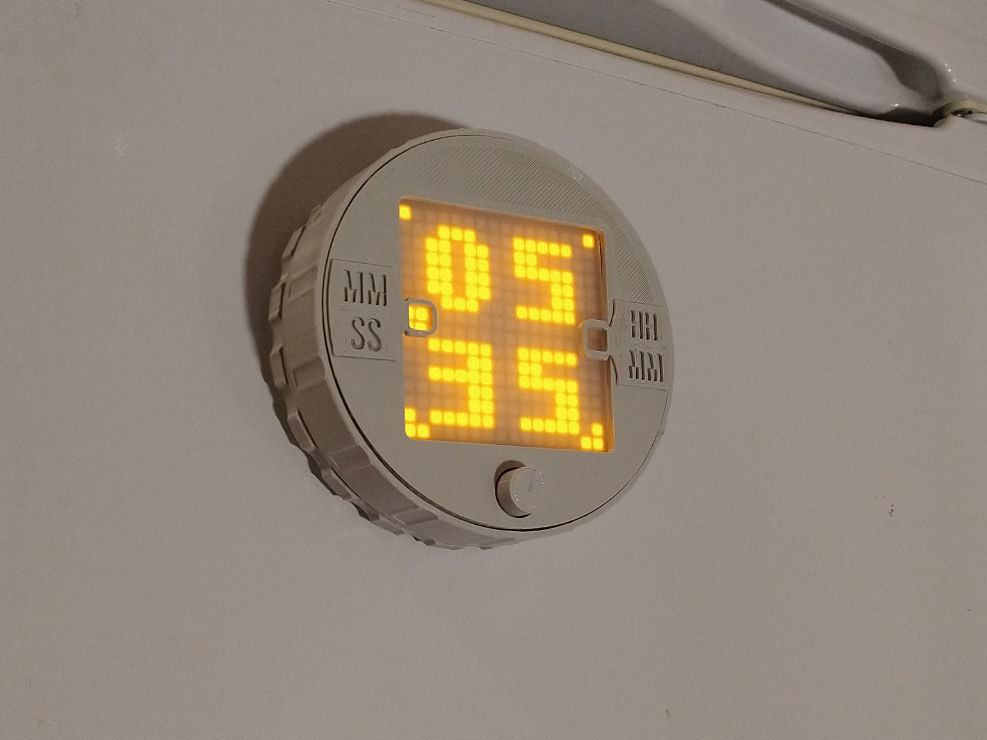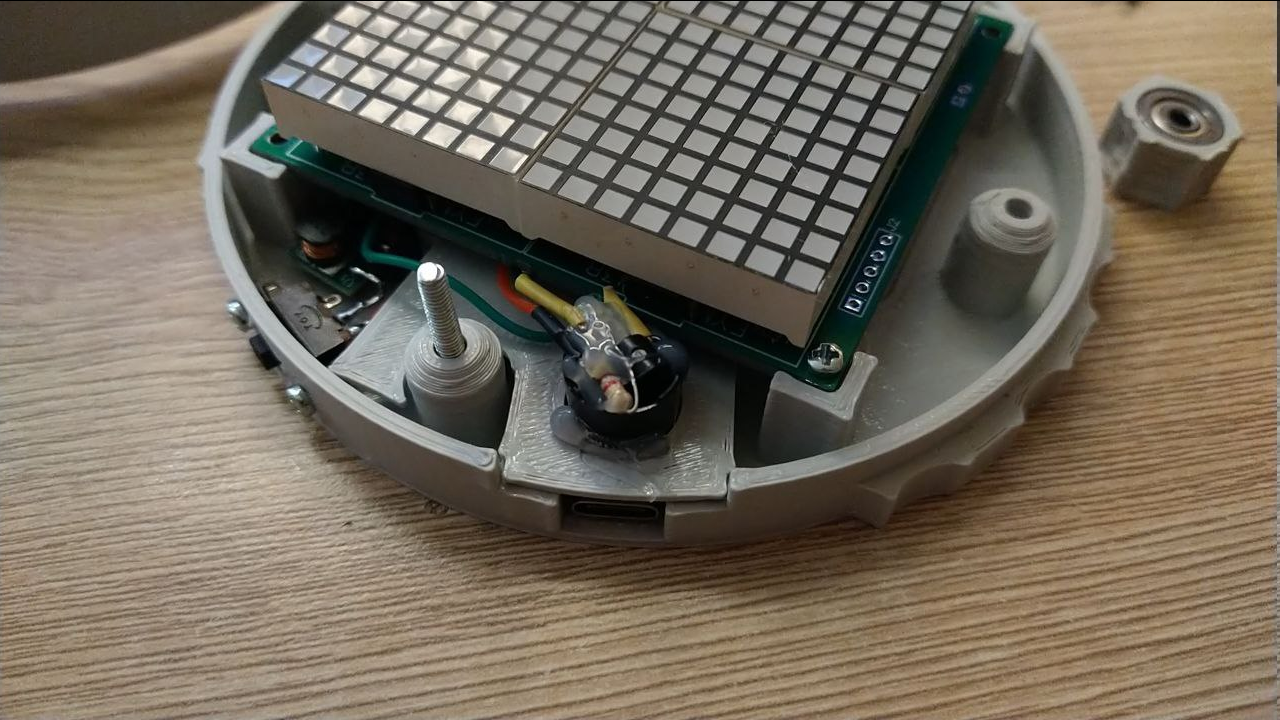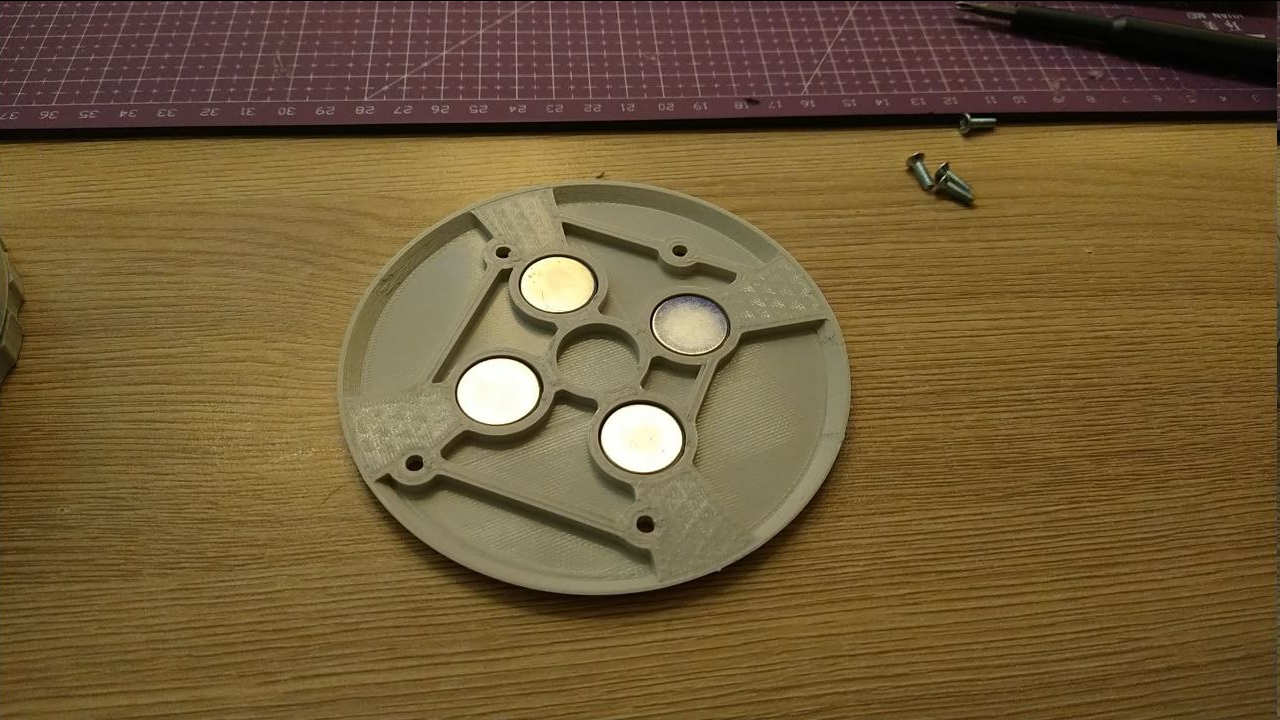I've changed indication that shows either MM:SS format or HH:MM and added few hints on the dial itself. Adds to the character a bit.
Also added more ergonomics by making more ridges on the case to have a sure grip when dialing time into the thing.
 I've ditched the idea to use PWM to generate sounds in favor of an active buzzer, buzz of which is modulated by the same PWM, albeit at around 2Hz to mimic a fire alarm. I think there is no chance i could achieve the same loudness as these little fellas can do - not with simple schematics atleast, you would need a bridge driver to push the aler further than a few rooms.
I've ditched the idea to use PWM to generate sounds in favor of an active buzzer, buzz of which is modulated by the same PWM, albeit at around 2Hz to mimic a fire alarm. I think there is no chance i could achieve the same loudness as these little fellas can do - not with simple schematics atleast, you would need a bridge driver to push the aler further than a few rooms. So I bodged a 2n2222 transistor with few supporting components so not to burn the GPIO and here it is - his loudness the buzzer, blowing right into the space where battery charger board is located - it has a proper opening to the world for sound to come out to.
 A new addition - instead of 6 weak magnets to attach the timer to fridge door, I've decided to use 4x 18x3mm neodymium magnets, each providing around 2,5kg of force. Enough to lock it in place and provide enough grip to rotate the dial without using another hand. Neat!
A new addition - instead of 6 weak magnets to attach the timer to fridge door, I've decided to use 4x 18x3mm neodymium magnets, each providing around 2,5kg of force. Enough to lock it in place and provide enough grip to rotate the dial without using another hand. Neat!And you can't imagine how hard it is to make a picture like this - these fellas do not want to stay in place without some adhesive help, always seeking to reunite with their attractive brethren.
 And to transfer the whole holding force to the primary case - it was redone to have recesses for heat set nuts, because threading plastic will probably not work when there is so much force pulling it in other direction.
And to transfer the whole holding force to the primary case - it was redone to have recesses for heat set nuts, because threading plastic will probably not work when there is so much force pulling it in other direction. And boom, there it is.
And boom, there it is.Although the precision leaves something to be desired - i use systick as a primary timing source and it can and will drift a bit. Timer was capped at 24h mark and even then it will probably drift to maybe a minute. It is still completely serviceable for meal preparation timing - no more burnt patties for me, yay.
STM32F103 has RTC and this board also has LF quartz attached to it - so there might be an update to use that as a timing source.
Also there is no power efficiency consideration - CPU is always active, DCDC effectiveness is probably subpar, so 1200mAh, as i estimate, might live for around 8-10 hours best. Though it is a question of when undervoltage circuits will kick in - the battery has one on it, and TP4056 board also has another one on it, so go figure. Maybe another day (probably not because i hate working with MCU low power modes - always break the debugging session or makes you read the documentation properly).
Until then - this is how the project is going to be paused at.
 mkdxdx
mkdxdx
Discussions
Become a Hackaday.io Member
Create an account to leave a comment. Already have an account? Log In.